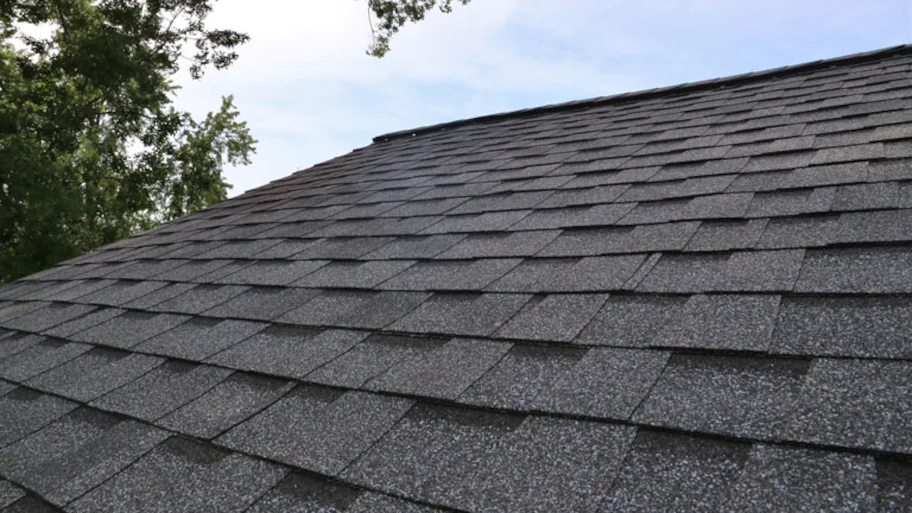Assessing the Solutions Offered by Roofing Companies in Gainesville Florida
Assessing the Solutions Offered by Roofing Companies in Gainesville Florida
Blog Article
Ideal Practices for Ensuring Correct Roofing Ventilation
A well balanced consumption and exhaust vent proportion, commonly 1:300, plays a critical duty, with intake vents ideally put at the reduced edge of the roof covering for great air access and exhaust vents at the top for cozy air exit. Maintaining insulation away from vents is vital to avoid air flow limitation.
Understand Air Flow Fundamentals
Appropriately understanding ventilation basics is essential for making sure the long life and efficiency of roof. Effective ventilation minimizes moisture accumulation and temperature extremes in the attic room, both of which can lead to significant architectural damages with time. A well-ventilated roofing system helps in avoiding common issues such as mold growth, timber rot, and ice dams, which can endanger the honesty of the roof materials and the underlying frameworks.
The primary objective of air flow is to promote the movement of air, permitting a constant exchange in between the interior and outdoor settings. This equilibrium is achieved through a mix of intake and exhaust vents that work together to maintain ideal air flow. Consumption vents, commonly situated along the soffits or eaves, enable fresh air to go into the attic area, while exhaust vents, typically located at or near the roofing ridge, allow hot, damp air to leave.
Secret variables influencing the efficiency of roof covering air flow include proper placement, adequate sizing, and guaranteeing that both consumption and exhaust vents are unhampered. Regular examination and maintenance are crucial to recognize prospective clogs, damage, or inefficiencies in the air flow system, therefore securing the roofing system's performance and sturdiness.
Sorts Of Roof Covering Vents
Roof vents play a crucial function in preserving reliable attic air flow and, by expansion, the total health and wellness of the roofing system. Numerous kinds of roofing system vents are readily available, each with unique advantages tailored to certain roof demands. Ridge vents, for instance, are installed along the roofing's peak, enabling cozy, humid air to get away from the attic room. They provide constant air flow and blend flawlessly with the roofline, making them both efficient and visually pleasing.

Soffit vents are installed under the eaves and operate in tandem with roofing vents to ensure a balanced intake and exhaust system. By permitting cooler air to enter from below, soffit vents assist in the expulsion of hot air with top vents. Gable vents, situated on the exterior wall surfaces of the attic, deal one more effective solution, specifically in homes with gable roofing systems.
Examine Your Existing Ventilation

Following, take into consideration the age and condition of your roofing products and air flow elements. Older systems may not abide by existing building regulations or may have deteriorated in time, lowering their effectiveness. Conduct an extensive assessment to determine any signs of wear and tear, such as rust, damage, or gaps that can endanger the system's efficiency.
Furthermore, determine the attic room temperature level and moisture degrees. High temperature levels and moisture can show insufficient air flow - gainesville fl roofing companies. Make use of a hygrometer and thermometer to get precise readings, comparing them with exterior conditions. Persistent discrepancies suggest possible concerns that require dealing with.
Setup Best Practices
Efficient installment of roofing ventilation systems is paramount for making certain optimum performance and longevity. Appropriate setup begins with understanding the particular ventilation demands of the roofing and the structure it covers. This entails determining the right proportion of consumption to exhaust vents, usually adhering to the 1:300 rule, which stipulates one square foot of ventilation for every 300 square feet of attic room floor space.

The placement of vents is similarly critical. Consumption vents need to be mounted at the roofing's reduced edge, usually in the soffits, to enable cool air to go into. Exhaust vents, on the other hand, must be installed near or at the roofing system's optimal to help Get More Information with the leave of warm, damp air. This develops a natural air movement that helps preserve temperature level and moisture balance within the attic room space.
Seal all air vent connections diligently to stop air leakages and potential water seepage. Usage premium products and comply with maker standards to make certain longevity and effectiveness. Additionally, integrating ridge vents with baffles can substantially enhance air flow effectiveness by preventing wind-driven rainfall and snow from going into the attic room.
Eventually, specific installment of roof covering ventilation systems minimizes potential issues such as mold development, ice dams, and structural damage, making sure the roofing's stability and the structure's total wellness.
Normal Maintenance Tips
Consistency in upkeep practices is basic to ensuring the lasting performance of roof ventilation systems. Regular inspections are critical, preferably executed biannually-- in the springtime and fall. During these examinations, make certain that vents are devoid of debris, nests, and other blockages that can hinder airflow. Examine for any type of indications of wetness accumulation or mold and mildew, as these can suggest improper ventilation or leaks (roofing companies in gainesville florida).
Use a soft brush or a vacuum to eliminate dirt and debris from consumption and exhaust vents. Be cautious not to damage the air vent displays or louvers throughout the procedure.
Proper insulation is similarly crucial. Guarantee that attic insulation does not obstruct the vents, as this can significantly restrict air flow. Rearrange or change it to maintain an effective barrier. if any type of insulation has actually shifted or settled.
Lastly, replace any damaged or missing elements without delay. Damaged vents, broken roof shingles, or worn-out blinking can all add to insufficient ventilation and must be resolved without hold-up. great site Regular maintenance guarantees that the roofing air flow system operates ideally, thereby prolonging the lifespan of the roofing system itself.
Final Thought
Making sure proper roof ventilation is critical for keeping the effectiveness and resilience of a roof covering system. Adherence to the 1:300 intake and exhaust vent proportion, coupled with the critical placement of vents, is important.
A well balanced intake and exhaust vent ratio, typically 1:300, plays a crucial role, with consumption vents ideally placed at the lower side of the roof for awesome air entry and exhaust vents at the optimal for warm air departure. Consumption vents, commonly situated along the soffits or eaves, allow fresh air to go into the attic space, while exhaust vents, often positioned at or near the roofing ridge, make it possible for warm, damp air to run away.
Soffit vents are installed under the eaves and work in tandem with roofing vents to make sure a balanced consumption and exhaust here system. By allowing cooler air to enter from below, soffit vents help with the expulsion of hot air through upper vents. Adherence to the 1:300 intake and exhaust vent ratio, coupled with the strategic placement of vents, is crucial.
Report this page